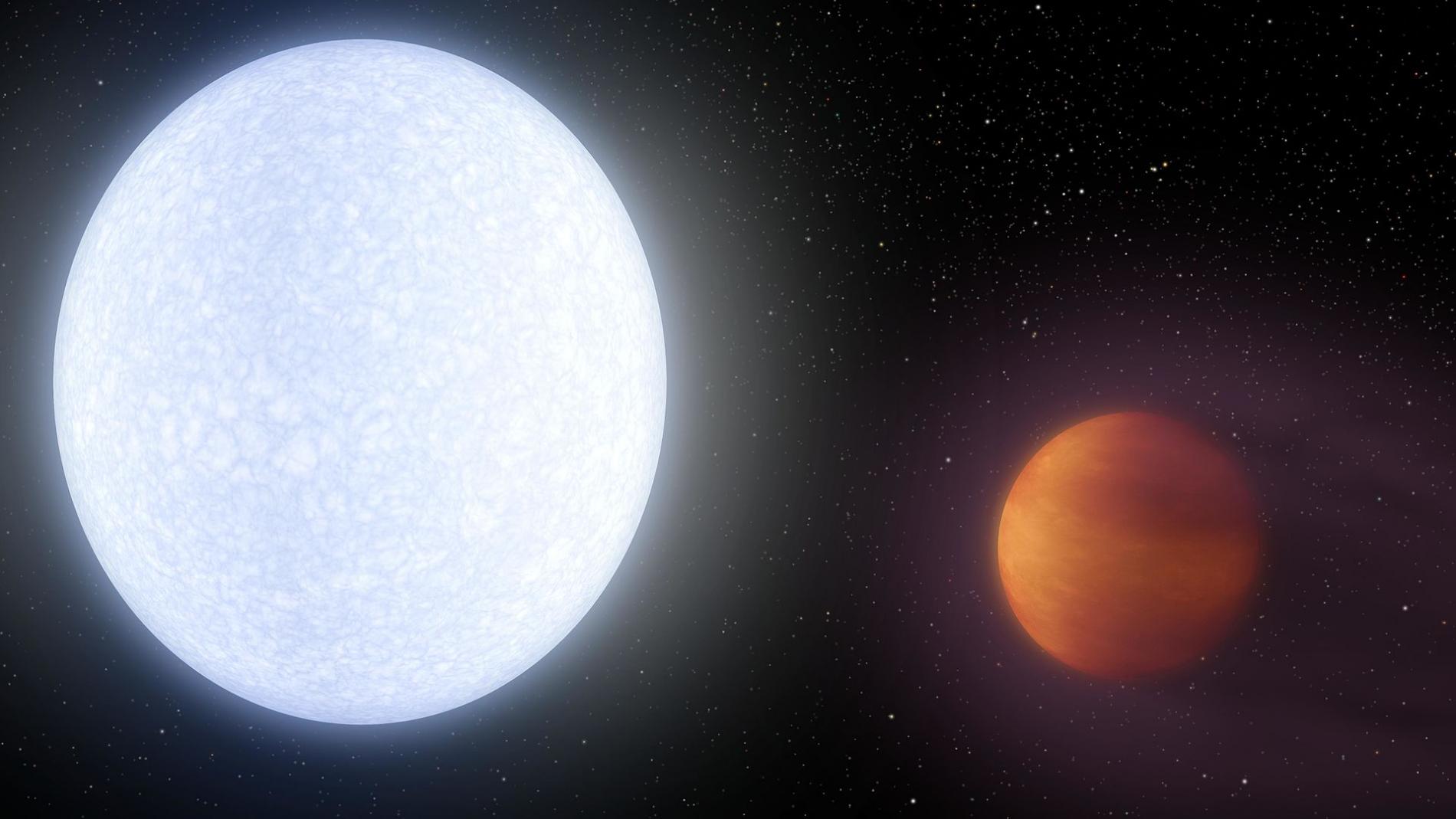Oxygen found in the atmosphere of the hottest known exoplanet
The Oxygen found in the atmosphere of the hottest known exoplanet (IAA-CSIC) participates in the first discovery of oxygen atoms in the atmosphere of an exoplanet. The detection has been made using observations with the 3.5-metre telescope at Calar Alto Observatory.
Since the discovery in 1995 of the first planet outside our Solar System, more than four thousand extrasolar planets have been detected. Over these two decades, scientific teams from all over the world have tried to characterise their atmospheres and explain why these new worlds are so different from the planets of the Solar System. Now, a team from the Institute of Astrophysics of Andalusia (IAA-CSIC) has published the discovery of oxygen atoms in KELT-9b, the first detection of this compound in an exoplanetary atmosphere.
With a dayside temperature of more than 4000 °C, the exoplanet KELT-9b, discovered in 2017, is by far the hottest exoplanet known to date. This planet is a gas giant similar to Jupiter, with the distinction that the temperature in its atmosphere is high enough to melt iron. This is because it orbits close to a hot and bright host star within just about 36 hours. Scientists have been struggling to understand the nature of such a hot and peculiar object, and why it does not simply boil away, being so close to its host star.
To study the atmospheres of these planets, the method of transits, small eclipses produced when the planet passes in front of its star, is used. During the transit, light from the host star will pass through the planet's atmosphere, allowing the physical characteristics and composition of the atmosphere to be studied.
“Our team detected the fingerprints of atomic oxygen in the planet’s spectrum. Given that KELT-9b is a very hot gas giant planet, this detection is not an indication of the presence of life, but it is the first definite detection of oxygen atoms in the atmosphere of an exoplanet”, says Francesco Borsa, researcher of the Osservatorio Astronomico di Brera (INAF), who leads the study.
The detection was inspired by new simulations of the planet’s atmosphere. The scientific group has developed one of the most advanced computer models capable of simulating the atmospheres of hot exoplanets. This model allows researchers to reproduce exoplanet atmospheres on a desktop computer and predict their temperature structure and composition with unprecedented accuracy. The model did not only match previous observations of other species in the atmosphere but it also predicted that oxygen atoms should be detectable in the transmission spectrum of the planet atmosphere.
The scientists went back to analyze previous observations of the planet obtained by using the 3.5-m telescope at the Calar Alto observatory in Spain. The results confirmed the prediction by the model; the oxygen signatures were there all along but had been missed by earlier analysis. New model did not only predict their presence. It also agrees with the observations remarkably well, giving researches confidence that the physics in the model captures the reality of hot exoplanet atmospheres to an unprecedented degree. The results show that while KELT-9b loses some gas over time from its hot atmosphere, it is not in danger of boiling away any time soon. Its proximity to the star does lead to strong turbulence and fast wind storms in its atmosphere though; the observations indicate that wind speeds can reach up to 40,000 km/h, which is remarkable considering that the strongest wind speeds recorded on Earth are of about 400 km/h, while those of Jupiter are of about 1,500 km/h.
“The agreement between the model and the observations is a milestone in our exploration of the planets outside of the solar system. It shows that we can now create realistic models of exoplanets and significantly improve our ability to understand the atmospheres of the hottest exoplanets. While similar observations of the atmospheres of smaller, cooler planets are not yet possible, one day they will be. We view this work as a dress rehearsal for future work in looking for oxygen in the atmospheres of different planets in the galaxy, including smaller, possibly habitable Earth-like worlds.”, says Denis Shulyak, researcher of the Institute of Astrophysics of Andalusia (IAA-CSIC) who participates in the discovery.

Artist's conception of KELT-9b. Source: NASA.
F. Borsa et al. "High-resolution detection of neutral oxygen in the atmosphere of an ultra-hot exoplanet". Nature Astronomy, dic 2021
Denis Shulyak, denis.shulyak@gmail.com
Instituto de Astrofísica de Andalucía (IAA-CSIC)
Unidad de Divulgación y Comunicación
Emilio José García – garcia@iaa.es - 649 407 445
https://www.iaa.csic.es
https://divulgacion.iaa.csic.es

